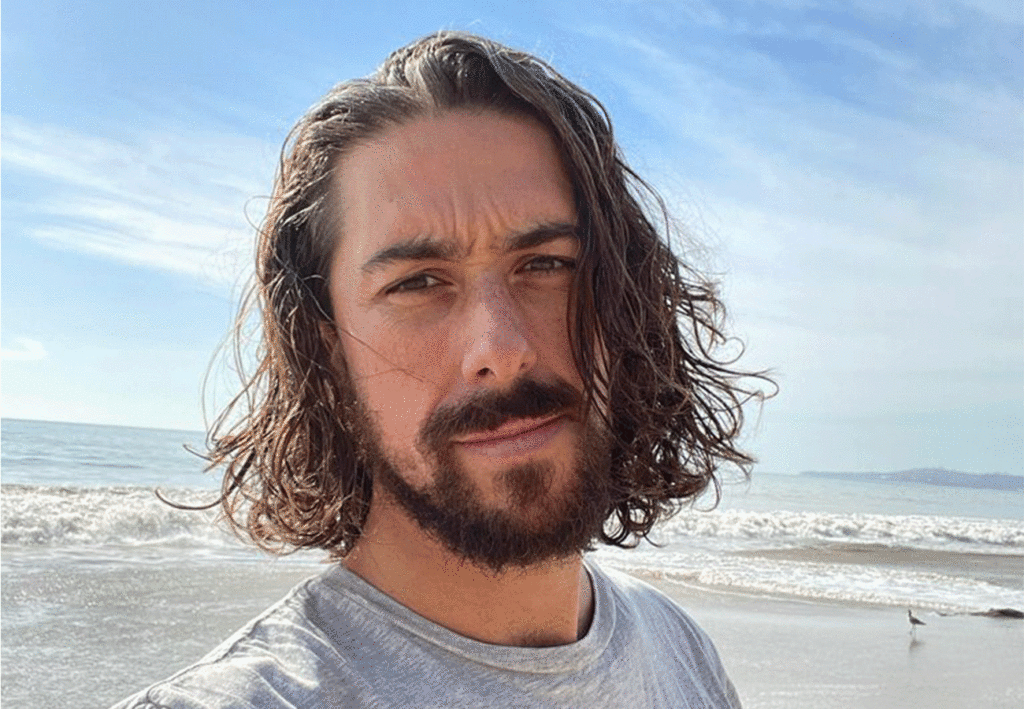The aging process
The most telltale sign of hair aging is, of course, going grey. Hair follicles produce a pigment called melanin, which gives hair its rich brown, black, red or blonde hue. As we get older, follicles start pumping out less melanin, so hair fades to grey. With pigment loss also comes texture changes and thinning. The strong, thick hair of our youth gradually becomes thinner and finer, especially around the hairline and at the crown. Here’s why: Each hair follicle actually holds several hair strands, referred to as bundles. Over time, the follicles start losing strands from each bundle. So, most people—even those blessed with naturally thick hair—will notice some thinning as they get older.
Due to a change in the growth process, hair also begins to grow slower. Basically, hair goes through three stages: anagen (the growth phase), catagen (a brief transitional phase) and telogen (the resting phase). Over time, hair gets lazy and starts to hang out less in the growth phase and instead resides more in the resting phase, which means it doesn’t renew itself as quickly and won’t be able to grow as long as it once did. Hormone changes, which are caused by the pill, pregnancy and menopause can also affect hair texture and growth.
Turn back the clock on your strands
1. Go sulfate-freeSulfates
are the cleansing ingredients that make products sudsy. They get rid of dirt and grime and whisk away dead skin cells that collect on the scalp. However, in doing so, they also strip hair of its natural oils, which give hair a silky texture, improve strand strength, and keep the scalp healthy.
2. Nurture your scalp
If you’re experiencing hair thinning, be on the lookout for scalp stimulating ingredients to incorporate into your hair care routine. When your scalp is stimulated, blood flow to the area is increased, which can result in faster hair growth. Maca root, a vegetable hailing from Peru, can do just that. Try pairing maca root with biotin and watercress for ultimate hair resilience. Biotin (aka vitamin B7) coats each strand of hair with a protective layer, and makes strands thicker and stronger. Watercress, a peppery green plant, packs vitamin A, vitamin C, vitamin E, and phytonutrients, which protect the hair and scalp from sun damage and environmental toxins. It also contains zinc and sulfur, which ward off bacterial infections that can damage the scalp and put the breaks on hair growth.
3. Stock up on strengthening ingredients
Hair gets weaker and more vulnerable to damage as we get older, which means you need to use products packed with ingredients that strengthen and protect strands. For example, arginine, one of the primary amino acids in keratin (aka the protein that makes up 90 percent of hair), strengthens hair, and reduces breakage and hair loss, while also moisturizing locks. Another standout is castor oil, which fills in damaged parts of keratin in the hair shaft, increasing strength and elasticity. The dynamic duo serine and threonine protect against heat damage. Lastly, silk proteins, which contain an important amino acid called cysteine, hydrate and strengthen strands.
4. Adjust your diet
A diet rich in vitamins and other nutrients will nourish your hair, promoting growth and strength. Here are some standout nutrients to stock up on for healthy hair:
Protein
Protein doesn’t just help build strong muscles—it builds strong hair, too. Hair is made up of mostly protein, so it needs a steady stream of this nutrient to help generate new strands. Some great sources of protein include: chicken, turkey, eggs, nuts, beans, yogurt and cheese.
Zinc
This important mineral aids in cell reproduction, tissue growth and repair—and also helps oil-secreting glands in the scalp function properly. Zinc can be found in meats like fish, poultry, mussels, shrimp and oysters.
Iron
Iron is needed to form red blood cells, which shuttle oxygen and nutrients to the hair to help it grow. In fact, a study that appeared in the Journal of Korean Medical Science shows a correlation between iron deficiency and hair loss in women.
B vitamins
B vitamins aid in cell metabolism. Research published in the journal Dermatology and Therapy shows that a deficiency in four types—riboflavin, biotin, folate and vitamin B12—is associated with hair loss. Keep your hair healthy by eating foods rich in B vitamins, such as meat, fish, poultry, eggs, whole grains, nuts and dark leafy greens.
Vitamin C
Vitamin C protects against free radical damage, promotes collagen production (collagen contains important amino acids) and helps the body absorb iron. You’ll find vitamin C in healthy foods like oranges, lemons, strawberries, watermelon, kale and broccoli.
5. Embrace hat hair
Your dermatologist will urge you to wear a hat to prevent skin damage and your hairstylist will back them up in regards to your scalp and strands. UVA and UVB rays can fry the hair cuticle (the strand’s protective cover), which can result in breakage, thinning and brittle strands.
6. Limit your heat tool use
The intense heat from blow dryers, curling irons and flat irons can also damage the hair cuticle, leaving hair vulnerable to breakage. So, try to limit how often you wield a heat tool. And when you do use one, prep your hair with heat protectant to help shield strands from damage.
Ready to hit pause on hair aging? Be sure to stock up on hair care that’s full of ingredients designed with your unique hair goals in mind, such as thicker, more moisturized strands. Get started with your Prose consultation here.





